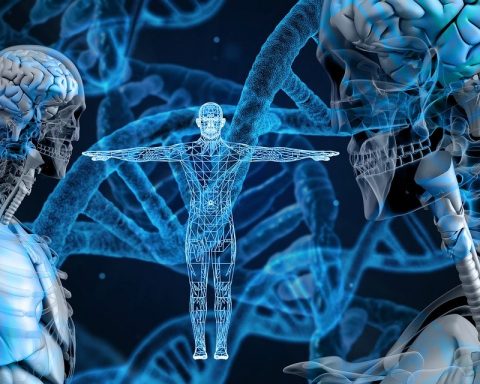Gene therapy refers to a pharmaceutical product that delivers a recombinant gene to somatic cells or existing cells to prevent and cure a wide range of diseases. In turn, the gene within the patients’ cell produces a protein that provides therapeutic benefit to the patient. The therapeutic approach in gene therapy is often the restoration of defective biologic function within cells, as is frequently seen in inherited disorders and cancer.
The aim of gene therapy for these patients is to deliver a “normal” chloride ion channel gene to the cells of cystic fibrosis patients and restore chloride transport in cells.
Approaches:
Cell based Approach:This involves the administration of transgenes to cells that have been removed from a patient. For example, cells (usually bone marrow cells) are removed from the patient; genes encoding a therapeutic product are then introduced into these cells ex vivo using a viral or nonviral delivery system, and then the cells are returned into the patient. The advantage of ex-vivo approaches is that systemic toxicity of viral or nonviral delivery systems is avoided.
Vector based Approach: It can be of two types.
Virus-based approach: This involves replacing viral replicative genes with the transgene, then packaging the rDNA into the viral particle. The recombinant virus can then infect target cells, and the transgene is expressed, though the virus is not capable of replicating. Both retroviruses, RNA viruses that have the ability to permanently insert their genes into the chromosomes of the host cells, and DNA viruses (which remain outside host chromosomes) have been used successfully in viral gene delivery. Most of the gene therapy trials worldwide involve the use of such viral delivery systems.
Nonviral approaches or bacterial cell based approach: The transgene is engineered into a plasmid vector, which contains gene-expression control regions. These naked DNA molecules may enter cells and express product in some cell types, such as muscle cells. This naked DNA delivery technique is being tested as possible DNA vaccines, in which the muscle cells produce small amounts of antigen that stimulate immunity to the antigen.
Using liposome, the therapeutic gene can also be inserted into the body.
All of these involve the in-vivo gene therapy techniques. Patient’s cells are not removed from the body; the therapeutic gene is delivered in vivo with the help of viral or non-viral vector or liposomes.
Effective gene therapy depends on several conditions:
- The vector must be able to enter the target cells efficiently and deliver the corrective gene without damaging the target cell.
- The corrective gene should be stably expressed in the cells, to allow continuous production of the functional protein.
- Neither the vector nor the functional protein produced from it should cause an immune reaction in the patient.
Types:
1. Somatic gene therapy
In somatic gene therapy, the therapeutic genes are transferred into the somatic cells (non sex-cells), or body, of a patient. Any modifications and effects will be restricted to the individual patient only, and will not be inherited by the patient’s offspring or later generations.
2. Germ line gene therapy
In germ line gene therapy, germ cells (sperm or eggs) are modified by the introduction of functional genes, which are integrated into their genomes. Germ cells will combine to form a zygote which will divide to produce all the other cells in an organism and therefore if a germ cell is genetically modified then all the cells in the organism will contain the modified gene. This would allow the therapy to be heritable and passed on to later generations.
Advantage:
- Incredible therapeutic potential.
- effective when delivered to tissue
- avoid drug side effects
- fix problem from its source (in some cases)
Application:
- It is used in the treatment of genetic disease by replacement of non-functional gene with functional one.
- It can be used for treatment of cancer patient
Limitation:
- Hard to deliver genes efficiently in a uniform manner throughout a tissue or system
- The physical and chemical properties of DNA and RNA molecules, such as size, shape, charge, surface characteristics,
- The chemical stability of these molecules and delivery systems.
- Difficult to control the amount of functional protein produced after gene therapy, and excess production of the protein could cause side effects, although insufficient production is more typically observed.
- Expensive .
- In-vivo problems may include bioavailability, distribution, and uptake of these macromolecules into cells.
- Naked DNA molecules are rapidly degraded in the body .
- Unknown long term effects of gene therapy.
Author Bio
Reference
2. www.gene-therapy.yolasite.com
3. Fulvio Mavilio, Giuliana Ferrari. Genetic modification of somatic stem cells: The progress, problems and prospects of a new therapeutic technology. EMBO Rep. 2008 July; 9(S1): S64–S69. doi: 10.1038/embor.2008.81. PMCID: PMC3327547.
4. Strachnan, T. and Read, A. P. (2004) Human Molecular Genetics, 3rd Edition, Garland Publishing, p. 616, ISBN 0815341849.






